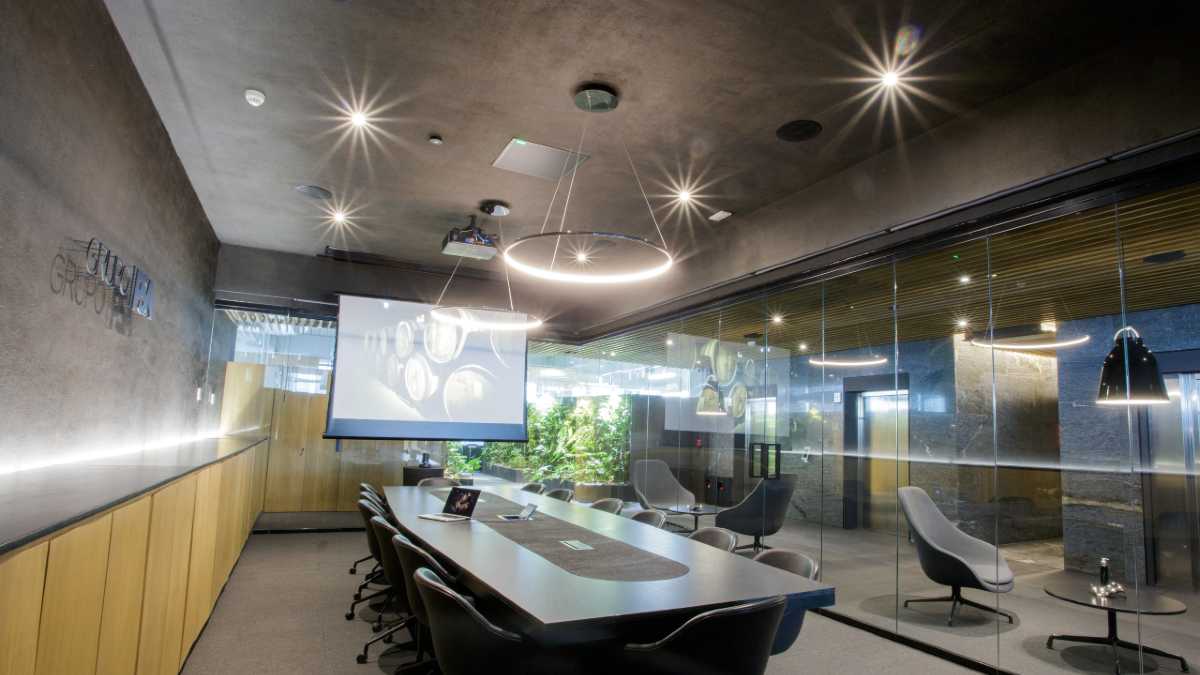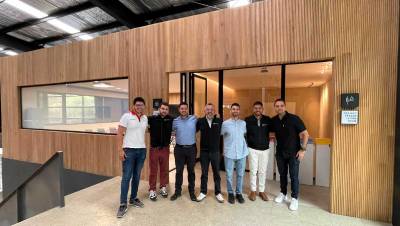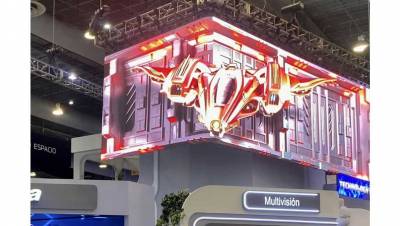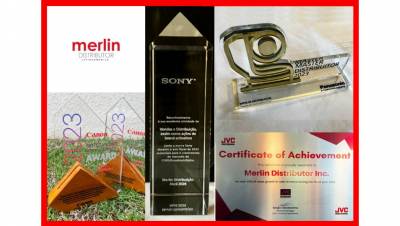Latin America. We all react instinctively when we enter a room and perceive how sounds and voices affect the space. Entering an open-design room with high ceilings and hard surfaces where voices and ambient noise have reverberation, for example, can create an adverse and unpleasant atmosphere.
Workspaces without acoustic treatment can have the same effect if there are many hard surfaces and objects that cause sounds to bounce. These can include glass walls, whiteboards, large computer monitors, or large format screens for making presentations.
Neurologists have shown that the quality of acoustic environments can significantly affect the brain's ability to construct accurate sound images. To understand this, we need to examine some scientific explanations regarding how sound behaves. Even in small meeting rooms and spaces, the reflected sound waves are recorded in our brain later than the initial sound waves. Since sound travels at about 344 meters per second, a sound wave in a room measuring 6 meters in length would travel back and forth between walls about 55 times in a second.
Because sound moves in 360°, rooms with many reflective surfaces also allow reflected sounds to mix and interact with each other. This makes hearing clearly more difficult even when only a few people are gathered in the room and even when the room has a reinforcement speaker system. Acoustic treatment options have advanced over the years to provide discreet and aesthetically pleasing options to reduce sound reflection.
According to Bose Work engineers, experts in collaboration and conferencing solutions, in addition to considering the use of a speaker and microphone system or a video bar for conferences, it is important to evaluate whether meeting rooms and huddle rooms require acoustic treatment that helps create the best possible sound environment in any workplace.
Acoustic treatment options
There is a wide range of acoustic treatment options for soundproofing conference rooms that allow organizations to customize solutions for meeting areas of different types of office.
All noise reduction materials for commercial environments such as a conference room come with a noise reduction coefficient (NRC) rating (from 0.00 to 1.00+) that measures the amount of sound energy they absorb. Materials with an NRC of 0.75 or more, which means they absorb 75% of the sound energy generated in the vicinity, are considered highly effective in addressing noise problems.
Some of the most successful materials for absorbing sound are cork, fiberglass, rock wool, and fibers sprayed with cellulose.
Acoustic treatments of the conference room can be divided into three categories: sound masking, soundproofing and sound absorption. Sound masking alternatives include white noise devices and speakers used to emit sound waves that cancel out audio coming from a space. Soundproofing encompasses structural options, such as soundproofed plaster sheets and windows specifically designed to diminish sound. While in sound absorption are considered false ceilings with acoustic ceiling mosaics, baffles and acoustic separators, acoustic panels mounted on doors and walls (from foam breads to designed art panels), and sound dampening curtains.
Below are some of the most popular acoustic treatment options and considerations for improving sound in a workspace.
Acoustic baffles
Baffles are noise-absorbing panels that are hung on the ceiling or on a wall. They can be built with an aluminum frame to provide support. The next time you're in a theater, look at the surrounding walls and you'll see the multiple baffles or fins mounted on the walls and even ceilings. They come in a variety of shapes and sizes, and are usually made of fiberglass, foam, and cotton core, or they can be wrapped in a patterned fabric to fit into the design of the space. When created with an artistic design in the upholstery, a baffle can make the room more enjoyable both visually and acoustically without being intrusive or distracting.
The thickness of baffles can range from a couple of inches to almost a foot, with higher frequency sounds needing thicker structures for adequate sound damping. Pricing options for baffle structures can start below $50 per piece, although those designed specifically for office spaces and conference rooms can range from $200 to $500.
Acoustic ceiling mosaic
Acoustic ceiling mosaic is one of the most popular options in terms of sound absorption in spaces where a false ceiling can coexist with existing regulatory and heating, ventilation and air conditioning requirements. Mosaics can absorb sounds to prevent waves from reflecting around the room. They can also prevent most of the sound from traveling to adjacent rooms, reducing ambient noise.
Ceiling tiles must include an NRC of at least 0.70. Installation through a false ceiling structure can also reduce the height of a room by a maximum of six inches. Usually, mosaics come in square sections of 60 cm or in rectangles of 2 x 4. Mosaic costs typically range from $25 to $40 each, but high-level sets of 12 or more can cost $100 per mosaic if they contain selected woods.
An acoustic ceiling installer can ensure that nothing needs to be moved or rebuilt to create a conference room with excellent sound.
Acoustic panels
Acoustic panels are typically made of wool or compressed mineral foam that "cleans" a solid waste gathering area that can disrupt collaboration and presentations.
Panels are often preferred because the fibers or pores of materials vibrate from sound energy, which increases friction with the pores and fibers that surround them and transforms acoustic energy into kinetic or motion energy. This energy dissipates quickly without reflecting the original nearby sound energy.
Like some acoustic ceiling mosaics, acoustic panels are offered in a standard size of 60 cm by 120 cm at a thickness of 2 to 4 inches. Most acoustic material suppliers also offer custom sizes up to 120 cm by 240 cm. The panels come in a wide variety of colors and some providers offer custom visual art treatments to add a decorative touch. Typically, acoustic panels are also arranged in groups of three, with prices ranging from $25 to more than $200 each.
Whether it's remodeling a meeting space or new construction in offices, business centers, event rooms in hotels or congress centers, it is always important to consider the acoustics of the meeting space and the possible treatments needed in order to create the best possible sound environment.
Text published by the company Bose.



























Leave your comment